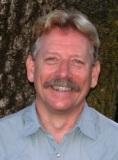- Author: John M Harper
Happy New Year!
I thought the following might interest you since we do produce Bison in Mendocino & Lake Counties. I've orded a copy of the book mentioned below.
| National Bison Association working to increase production | |||
| By Ann Bagel Storck on 1/4/2010 | |||
|
- Author: John M Harper
Much of the rangeland in the western United States is threatened by the spread of cheatgrass and medusahead, invasive non-native annual grasses that fuel wildfires and readily infest landscapes, especially after fires. These rangelands historically were burned by wildfires every 50 to 100 years, but over the past century, these fires have been suppressed by humans. This suppression allowed some dead plant litter to accumulate, but when cattle were introduced to the region, their grazing helped keep litter accumulation in check.
Rangeland scientists Kirk Davies and Jon Bates and research leader Tony Svejcar, who work in the ARS Range and Meadow Forage Management Research Unit at the Eastern Oregon Agricultural Research Center in Burns, Ore., carried out studies comparing how native plants on grazed and ungrazed sagebrush rangelands recovered from fires. All the sites had similar vegetation profiles and were virtually free of cheatgrass.
In the grazed areas, cattle consumed around 40 percent of the available forage, which removed much of the potential litter. The ungrazed sites, where livestock had been excluded since 1936, had almost twice as much litter as the grazed sites.
The scientists conducted a controlled burn on all the sites in 1993, and then measured vegetation cover, vegetation density and biomass production in 2005, 2006 and 2007. They found cheatgrass had infested a large portion of the ungrazed sites, leaving these areas even more vulnerable to future fires.
However, cheatgrass did not become problematic on the sites that had been grazed. On these sites, native bunchgrass cover was almost twice as dense as bunchgrass cover on the ungrazed sites. The team concluded that the litter in the ungrazed sites fueled hotter fires that killed off much of the perennial vegetation, which allowed quick-growing invasive annuals to become established.
Reprinted from ARS
- Author: John M Harper
"During the first two weeks in January, producers will be contacted to participate in the Sheep and Goat Inventory Survey." said Carol House, NASS deputy administrator. "This survey will provide the latest information on conditions and trends in the U.S. sheep and goat industry for 2010."
When contacted by a NASS field office representative, producers will be asked to provide information on the number of breeding and market sheep and goats, lambs and kids born during the previous year, as well as mohair production, wool production and prices. For convenience, producers will have the option of responding to the survey by telephone, mail, during a personal interview or online.
Results will be published in the Sheep and Goats report, scheduled for release Jan. 29, 2010.
Reprinted from ASI
- Author: John M Harper
Below are the PowerPoint presentations that were given at the Buying & Selling Local Meat Workshop.
Local Meat Selling & Buying [Compatibility Mode]
Sonoma County Meat Buying Club
Direct Marketing Meat
Direct Marketing Meat-PR, events [Compatibility Mode]
Range To Plate [Compatibility Mode]
- Author: John M Harper
Howdy all of you high tech range livestock producers in Mendocino & Lake Counties!
This starts a new era for me in communication - the use of a BLOG.
The purpose of this BLOG is to offer short educational pieces of information to range livestock producers and managers and allow for comments back. The goal is to produce about ten of these per year. I hope you'll find them useful and further hope your questions and comments will generate ideas for this on-line community.

John Harper
UCCE Mendocino County Director/Livestock & Natural Resources Advisor


